OTRS Motion Analysis Software Case Study
Marugo Rubber Industries | Cost reduction of several hundred million yen for one process through applying motion analysis software and targeting improvements in 0.1 second units using OTRS10.



Industry: Manufacturing


Employees: 1,000+


Revenue: 23.7 Billion yen
※1:Current as of 1 April ※2:FY 2017
Founded: May 1919
Established: January 1954
Address: 58 Mamitomii, Kurashiki
Okayama710-8505
Business Description:
- Manufacturing and sales of vibration control parts, hoses and other automotive rubber parts
- Manufacturing and sales of industrial rubber parts
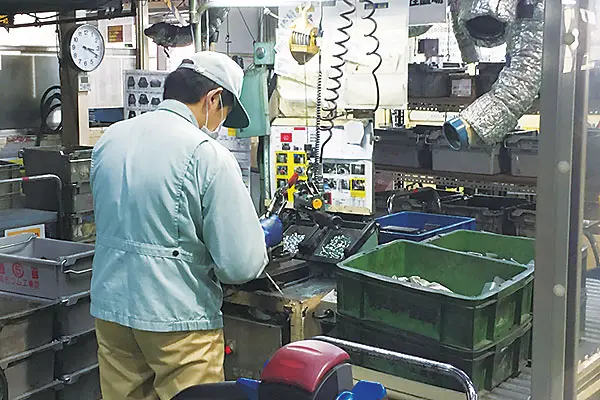

Issue
Stopping of improvements at the level visible to the naked eye and stagnation of related activities
Outcome
Improvement activities achieved through applying motion analysis software to study the process at greater detail
Introduction background (Issue)
Limited effects in spite of long-term improvement efforts
In addition to providing vibration control rubber that absorbs automobile vibration to major automobile manufacturers, Marugo Rubber Industries is involved in various rubber products. Although the company has conducted improvement activities for a while and once achieved a considerable inventory reduction, such efforts had not recently had any obvious effects.
“The only improvements we were making were those visible to the naked eye, and they did not reach the level of overall improvements for which the flow was considered. I suppose you could say that we were making isolated improvements, as opposed to more general ones.” – Hiroyasu Siozu, the manager of improvement activities at Marugo Rubber Industries
Why OTRS time and motion analysis software was selected
The major improvement effects experienced by customers using OTRS were the deciding factor
Given the above situation, it was necessary to improve plant operations to respond to customer requirements as well. OTRS came up as a motion analysis software tool for reliably promoting improvement activities. Because Mitsubishi Motors, one of the company’s customers, had already utilized OTRS to achieve improvement effects, the decision was quickly made to introduce the software.
“OTRS had already been used by Mitsubishi Motors and other major automobile manufacturers in our customer base to satisfy their requirements, so we were confident that the time and motion analysis software would be effective for our company’s improvement activities as well and did not hesitate to introduce it.” – Hiroyasu Siozu
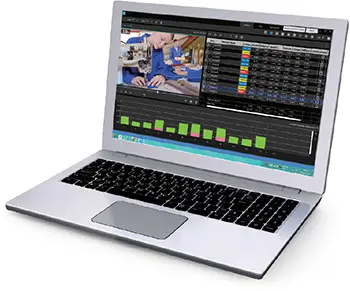

Introduction process
Establishment of an operational structure that included the assignment of a full-time person with responsibility for OTRS motion analysis software
Marugo Rubber Industries actually introduced an older version of OTRS before, but using the software required a certain level of skill, so it did not get used much. The latest version of OTRS is much easier to use, which is one thing the company likes about it.
In addition, to ensure good improvement activity progress, a full-time person in charge was decided on upon introduction, and an operational structure in which Mr. Siozu personally looks over every QC circle report was set up.
“OTRS is easy to use even for our on-site staff. Another thing appealing about it is that charts, graphs, and even operating cycle diagrams are displayed after performing an operational analysis, so comparison videos and manuals can be easily created.” – Hiroaki Yamamoto
“To promote cross-organizational activities that go beyond management, I started my work as the improvement-activity manager by commenting on what I wanted people to be careful of, points requiring improvement, and other issues. I also think that appointing a full-time person in charge helped to facilitate smooth OTRS operations in practice and led to increased effects.” – Hiroyasu Siozu
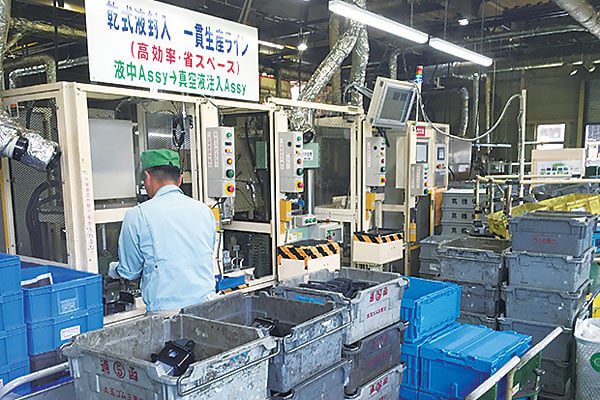

Introduction outcome
Cost reduction of several hundred million yen for one process through video confirmation and improvements in 0.1-second units
The company has already seen various effects in terms of using OTRS to make improvements. For example, in the case of a certain painting process, there were frequent issues with uneven coating. When OTRS was used to perform a video analysis of the situation, it was discovered that the spray gun was set up in an unsuitable position, which was causing the paint not to reach well enough. As a result of adjusting the gun position, it became completely unnecessary to touch up the work, which led to a cost reduction of several million yen for just one process. In addition, as a result of making various improvements to the procedures and other elements of another process, the cycle time was reduced from 89 to 50 seconds, a considerable 39-second reduction.
The company plans to utilize these comparison videos for future employee training as well.
“Because OTRS enabled us to specify settings in 0.1-second units as opposed to 1-second units, we were able to make improvements that would have been diffcult if relying on vision alone, such as the uneven application of paint by our spray gun. In addition, some workers resist procedural changes due to their own habits and what they’ve gotten used to, but showing them comparison videos made it possible to convince them that the new procedures were faster and thus promote improvements.” – Hiroaki Yamamoto
“No one ever thinks there are inefficiencies with their own work, so helping people to notice these inefficiencies leads to the ability to make improvements. One major advantage of OTRS videos is their ability to help people notice such problems.” – Hiroyasu Siozu
The next step
We want to train employees in charge of improvements full-time to further accelerate our activities
As a result of conducting activities for one year after appointing a person to be in charge of OTRS full-time, people at other job sites expressed a wish to use OTRS to make improvements. The company started by focusing on processes at the Head Office Plant, where it was necessary to increase the yield as soon as possible, but the company plans to extend its improvement activities to the Yakage Plant and other plants as well, and even provide guidance for subcontractors. In addition, because Marugo Rubber Industries is working on making mechanical improvements as well, the company is taking steps to establish an environment where safer, more efficient work is possible by improving not only the way people work but also jigs and equipment.
“We hope to further accelerate our improvement activities by using OTRS to save on labor and achieve more personnel leeway while simultaneously training employees to be in charge of improvements full-time at each job site. We plan to start by teaching the basics of making improvements to all of our staff members in rotation.” – Hiroyasu Siozu
Customer Feedback
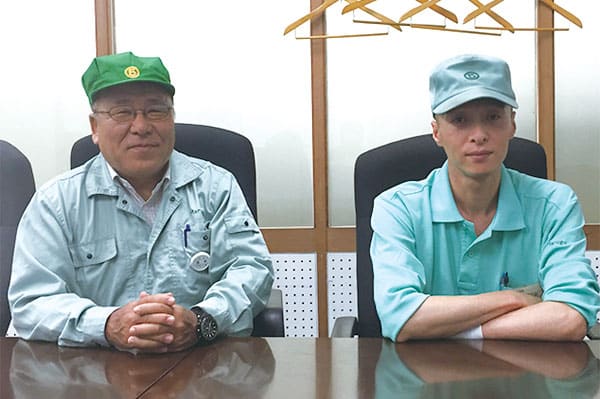

OTRS time and motion analysis software makes it possible to notice things invisible to the naked eye. Personally checking videos facilitates work-procedure optimization.
As a result of using OTRS to perform a detailed motion analysis of our painting line, we discovered that the coating unevenness was due to a poorly positioned gun, and this enabled us to achieve a major improvement effect. There is no way anyone could have seen this just by looking, so I was honestly surprised by the software’s analytical power. In addition, when people develop habits or get used to doing things in a certain way, they sometimes end up unconsciously following different work procedures. However, I think the ability to check out how they work by watching OTRS videos can help them to reduce procedural mistakes.
Mr Hiroyasu Siozu – Assistant Manager (left)
Vibration Control Division, Head Office Plant
Mr Hiroaki Yamamoto (right)
Production Division, Head Office Plant
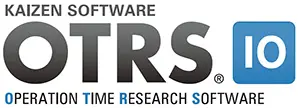

OTRS is a time and motion analysis software product supported by Shinka Management, with an installation base of 6000 licenses spanning 20 countries.
For further information, or to request a demo or trial, see OTRS10 time study software.


